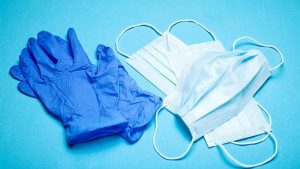
Social Distancing in Emergencies

Social Distancing in Emergencies
The UK Government’s guidance for working safely during Covid-19 states that “in an emergency, for example an accident or fire, people do not have to stay 2m apart if it would be unsafe”.
Covid-19 secure guidelines have the potential to change the fire risk profile of an organisation and the potential issues of workplace configurations during the pandemic will need to be taken into account from a fire safety perspective.
As there is a potential for change to the fire risk profile, organisations will need to review the fire risk assessment to ensure it identifies such changes and analyse the risk from the changes.
Social Distancing in Emergencies. Examples of such changes are:
The Fire Emergency Plan for the premises will need to be reviewed as part of the fire risk assessment review. Key issues in relation to social distancing are evacuation through means of escape that prevent social distancing, the evacuation of those who require assistance and the assembly point.
It is recognised that social distancing may not be possible during an evacuation due to the configuration of the means of escape. Organisations should not introduce any measures to mitigate this that make evacuation unsafe, for example by delaying evacuation.
A particular challenge may be social distancing where assistance is provided to those who require support to evacuate safely. Any Personal Emergency Egress Plan/s (PEEP) will need to be reviewed. In doing so, the organisation should take into account current official fire safety guidance and the UK Government Covid-19 secure guidelines in relation to those with “protected characteristics”.
Where close contact is necessary, immediate hygiene measures should be adopted for all those involved following the evacuation.
Assembly points
Assembly points assist in the control of occupants who have evacuated as well as enabling on-going communication and roll-call procedures, for example. The organisation should review the use of the assembly point and determine if social distancing can be maintained or whether alternative measures are required.
This could include the use of additional assembly points, marking the ground for social distancing, controlling dispersal, etc.
If you would like to have your fire risk assessment reviewed or have a new one created please contact us.
Stay Safe!

Online training
Since the UK lockdown due to COVID-19, classroom-based training has largely halted. Delegates sit indoors in very close proximity for long periods of time. There are additional risks associated with using public transport and mingling at break times. In short, classrooms can be petri dishes. Online training avoids these risks and, according to our beloved principles of prevention, should be considered before options such as distancing or barriers. It is also questionable how many delegates could fit into a venue if they must be physically distant.
There are subjects for which face-to-face training is unavoidable. If online training is an option, it is worth considering the benefits and potential pitfalls.
In the current climate of home working and skeleton staff in the workplace due to COVID-19, we look at the benefits of online training and the advantages that are offered. These include:
Delivering training online undoubtedly has potential pitfalls such as being let down by, or being unable to use, the technology. The pitfalls can be avoided or managed with some simple steps.
Many organisations have little option but to consider online training. Rather than being an undesirable substitute, this approach offers tremendous benefits and could become the new normal regardless of how COVID-19 plays out.
Getting the best from it requires an initial investment of time and effort. As with most things in life, the more you put in, the more you’ll get out.
Contact us for your training needs.
Keep Safe!

The World Health Organization (WHO) has published new advice for the public on when and how to wear masks safely.
The guidance covers fabric masks and medical masks, describing who should wear what type of mask and when.
Face coverings have become mandatory in some shops and supermarkets in England. In terms of the law, in England, people are required to wear face coverings:
Some key points for fabric masks include the following.
In addition, the WHO has advised the public of the following Don’ts with regard to fabric masks.
Don’t use a mask that looks damaged.
Don’t wear a loose mask.
Don’t wear your mask under the nose.
Don’t remove the mask where there are people within a metre.
Don’t use a mask that is difficult to breathe through.
Don’t wear a dirty or wet mask.
Don’t share your mask with others.
With thanks to The World Health Organization (WHO)
Contact us if you want to discuss Covid-19 risk assessments, social distancing signage or hand sanitiser.
Stay Safe!
 Why should we pay attention to housekeeping at work?
Why should we pay attention to housekeeping at work?Effective housekeeping can eliminate some workplace hazards and help get a job done safely and properly. Poor housekeeping can frequently contribute to accidents by hiding hazards that cause injuries. If the sight of paper, debris, clutter and spills is accepted as normal, then other more serious health and safety hazards may be taken for granted.
Housekeeping is not just cleanliness. It includes keeping work areas neat and orderly; maintaining halls and floors free of slip and trip hazards; and removing of waste materials (e.g., paper, cardboard) and other fire hazards from work areas. It also requires paying attention to important details such as the layout of the whole workplace, aisle marking, the adequacy of storage facilities, and maintenance. Good housekeeping is also a basic part of accident and fire prevention.
Effective housekeeping is an ongoing operation. By keeping the work area consistently tidy can show the company are serious about keeping employees and others safe. Periodic “panic” clean ups are costly and ineffective in reducing accidents.
Poor housekeeping can be a cause of accidents, such as:
To avoid these hazards, a workplace must “maintain” order throughout the working day.
Effective housekeeping results in:
A good housekeeping program plans and manages the orderly storage and movement of materials from point of entry to exit. The plan also ensures that work areas are not used as storage areas by having workers move materials to and from work areas as needed.
Housekeeping order is maintained not achieved. This means removing the inevitable messes that occur from time to time and not waiting until the end of the shift to reorganize and clean up. A good housekeeping program identifies and assigns responsibilities for the following:
Don’t forget places such as shelves, basements and boiler rooms that would otherwise be overlooked. The orderly arrangement of operations, tools, equipment and supplies is an important part of a good housekeeping program.
The final addition to any housekeeping program is inspection. It is the only way to check for deficiencies in the program so that changes can be made. Walker Health and Safety Services can carry out workplace inspection.
Contact Walker Health and Safety Services should you require further information.

The coronavirus (COVID-19) epidemic continues in the UK. As we move to the “recovery phase” or the “new normal” as it is often referred to, employers are expected to plan for the return to work of employees where they are not able to work from home.
The UK Government has published COVID-19 Secure working safely guidance for workplaces that provides a hierarchy of risk control measures that employers and the self-employed are expected to follow when reviewing their risk assessments for COVID-19 hazards.
“When managing the risk of COVID-19, additional PPE beyond what you usually wear is not beneficial. This is because COVID-19 is a different type of risk to the risks you normally face in a workplace, and needs to be managed through social distancing, hygiene and fixed teams or partnering, not through the use of PPE.
“Workplaces should not encourage the precautionary use of extra PPE to protect against COVID-19 outside clinical settings or when responding to a suspected or confirmed case of COVID-19.
“Unless you are in a situation where the risk of COVID-19 transmission is very high, your risk assessment should reflect the fact that the role of PPE in providing additional protection is extremely limited.
“However, if your risk assessment does show that PPE is required, then you must provide this PPE free of charge to workers who need it. Any PPE provided must fit properly.”
Note: Where an employer is required to provide PPE in relation to the mitigation of transmission risks from COVID-19, the requirements of the Personal Protective Equipment at Work Regulations 1992 will apply.
The UK Government has published a Coronavirus (COVID-19): Personal Protective Equipment (PPE) Plan. This contains guidance on who needs PPE, what type of PPE is required and in what circumstances. It states that PPE is “a precious resource and must be used only where there is a clinical need to do so”.
In summary, the guidance recommends that:
The guidance then states: “Beyond these roles, the current clinical evidence says there is not a widespread benefit from wearing PPE. Instead, the best way to protect yourself and others is to regularly wash your hands and to keep at least two metres between you and other people whenever you leave your house”.
The guidance on Cleaning of Non-healthcare Settings states the following.
“The minimum PPE to be worn for cleaning an area where a person with possible or confirmed coronavirus (COVID-19) has been is disposable gloves and an apron. Hands should be washed with soap and water for 20 seconds after all PPE has been removed.
“If a risk assessment of the setting indicates that a higher level of virus may be present (for example, where unwell individuals have slept such as a hotel room or boarding school dormitory) or there is visible contamination with body fluids, then the need for additional PPE to protect the cleaner’s eyes, mouth and nose might be necessary. The local Public Health England (PHE) Health Protection Team (HPT) can advise on this.
“Non-healthcare workers should be trained in the correct use of a surgical mask, to protect them against other people’s potentially infectious respiratory droplets when within 2 metres, and the mask use and supply of masks would need to be equivalent to that in healthcare environments.”
The Government’s COVID-19 Secure guidance states that covering the face may be “marginally beneficial as a precautionary measure”. The evidence indicates that wearing a face covering does not protect the wearer but may protect others if you are carrying the virus.
Face coverings are not a substitute for other forms of risk control in the workplace.
The guidance states: “Wearing a face covering is optional and is not required by law, including in the workplace. If you choose to wear one, it is important to use face coverings properly and wash your hands before putting them on and taking them off.”
Optional use includes on public transport and in some shops or other “enclosed spaces where social distancing is not always possible” and where individuals might come into contact with others that they do not normally meet.
If you require further information, on risk assessments for COVID-19 or any other topic, please contact us.